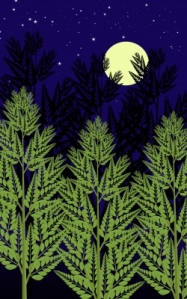 Myths, legends, fables, folktales and fairy tales – it is hard to define exactly what they are, what the difference is and which stories belong to which label. Even so, I believe they are all interconnected to some degree. I have always been fascinated by these stories whether they are the long sprawling Greek myths of Homer or short fables of Aesop. They are the inspiration behind many fantasy and horror stories like those by Tolkien, Terry Pratchett and Stephen King.
Myths, legends, fables, folktales and fairy tales – it is hard to define exactly what they are, what the difference is and which stories belong to which label. Even so, I believe they are all interconnected to some degree. I have always been fascinated by these stories whether they are the long sprawling Greek myths of Homer or short fables of Aesop. They are the inspiration behind many fantasy and horror stories like those by Tolkien, Terry Pratchett and Stephen King.
(For this article I have grouped myths and legends under the same title of myths and fables, folktales and fairy tales under the fairytale title.)
Where do these names come from?
First to define what we mean by ‘myth’. The word is taken from the Greek ‘mythos’ meaning word of mouth, as this is how they would have originally been told before they were written down. These stories are usually quite complex and revolve around how the world was created or epic tales of events and achievements of nations or individuals.
Fairy tales, on the other hand, come from the French ‘conte de fées’ first used by a group of 17th century writers. The word fairy in french is ‘fee’ or ‘feerie’ which means ‘ illusion’, also ‘fey’ was used to describe women who used magic. They are also known as folktales because they are about ‘folk’, ordinary common people. These stories are much more down to earth focusing on the collective wisdom of the people as lessons in morality.
Similarities and differences
Myths and fairy tales have much in common:
- They are both stories passed down from generation to generation.
- They have a universal appeal as all over the world the same themes and ideas come up again and again.
- Both have magical supernatural elements whether from Gods or fairies and witches.
They also differ in a number of ways:
- Characters: The people whose stories they tell are from very different. Myths usually involve Gods and heroes whereas fairytale characters are more likely to be poor with mundane lives.
- Time written: Most myths were written a long time in the past; no new myths are being developed. Whereas fairy tales such as Alice in Wonderland or The Wizard of Oz were not written that long ago and writers such as Neil Gaiman and Angela Carter have created new tales.
- Subject matter: Myths concentrate on large-scale subjects such as the creation of the world (literal ‘truths’) or the history of a people or belief. Fairy tales are more mundane, instead writing about ordinary people’s lives and experiences but as not in a way that does not pretend to be based on what the world is actually like.
- Timescale: Myths are set over long periods of time often covering more than one person’s lifetime. Fairy tales tend to cover an event or period of the heroine’s life.
- Choice v destiny. In Myths the heroes such as the Greek hero Oedipus, ends up following his destiny whatever path he takes. These stories can be morally ambiguous and do not often have happy endings. Fairy tales involve individual choices and an opportunity to change things. They are more black and white regarding what is wrong or right. Characters are rewarded for choosing good over bad and evil is destroyed.
- The writers: Myths are told by and eventually written down by learned men to be performed as plays to large numbers of people. Folktales are more likely to be handed down (often by women) verbally in small family or community groups each with their own local slant.
So, is it fair to link them together at all?
I think so. Despite their differences they belong to a distinct genre of storytelling which is still very popular in literature and film, either in their original state or revamped to appeal to different generations. I think the fact that they are constantly evolving and being reinvented is the key to their survival and enduring popularity.
Picture – Castle.Fairy-Tale by Mikalojus Konstantinas Čiurlionis




